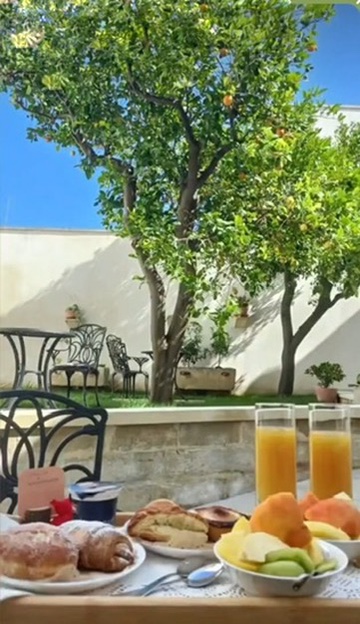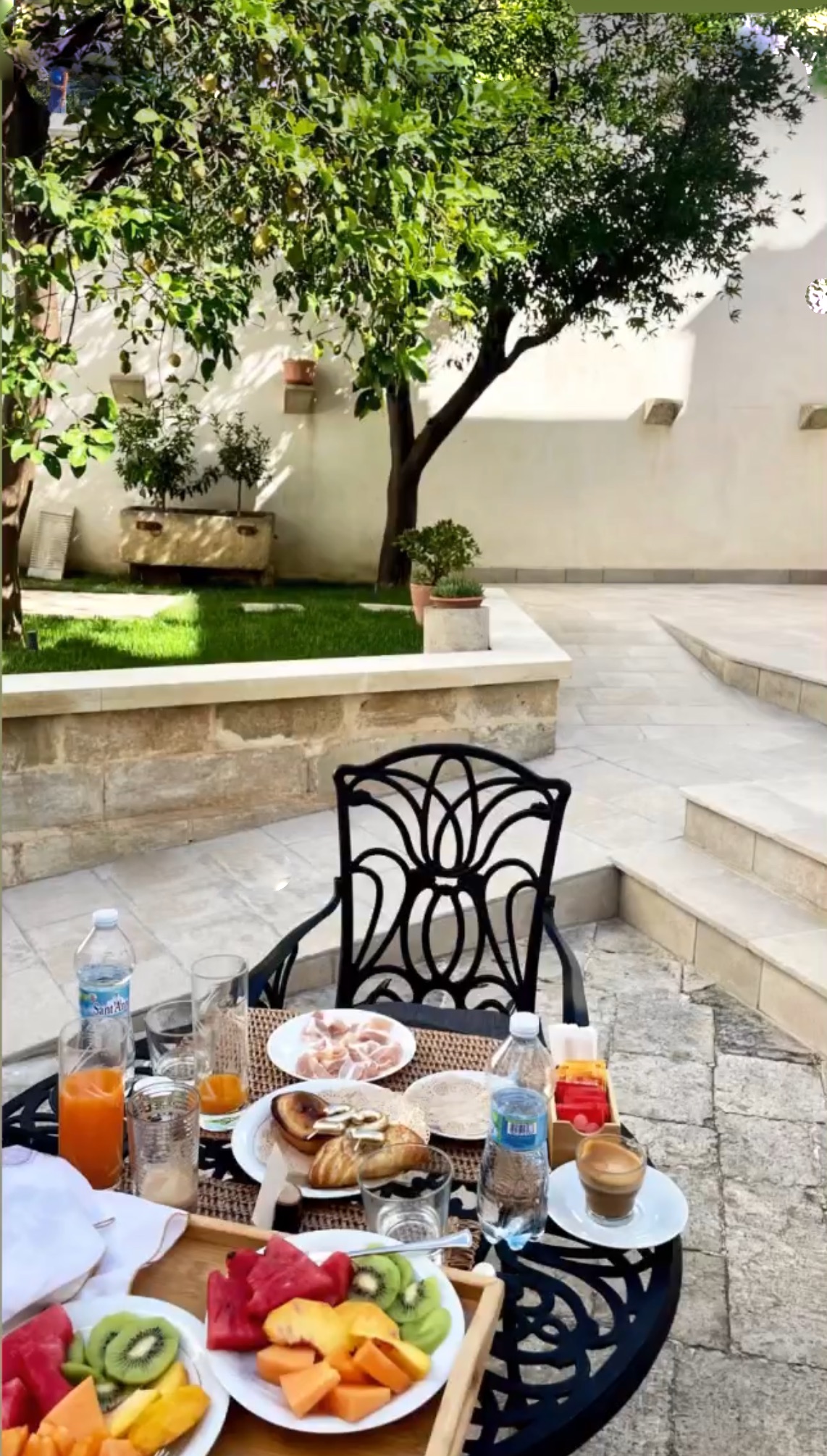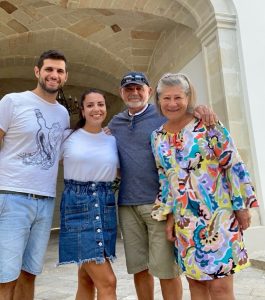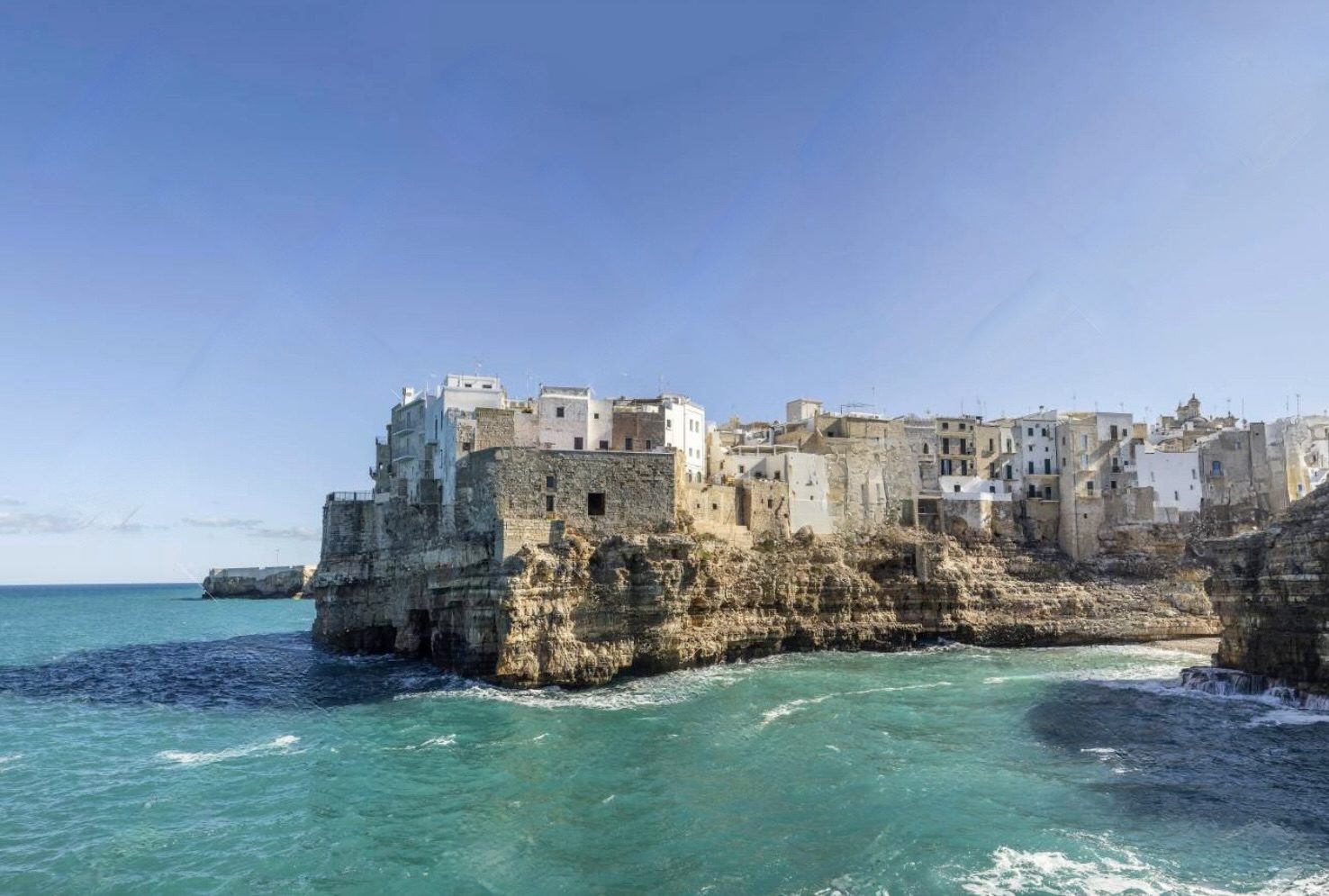Dimora La Fuga, A Labour of Love.
Sometimes, somewhere incredible is waiting to be known. These are the journeys that make travel exciting.
I have always been delighted at the prospect of a new place, a new town, a whereabouts with a bit of magic waiting somewhere behind the morning.
I had been waiting a while for this very opportunity; to visit and participate in the Notte della Taranta.
The origins of the Taranta are not new to me; I had written about this primitive dance (see https://somewhereyouveneverbeen.com/viva-viva-il-carnevale/ ) that sees mostly women and men contorting and gyrating to the beat of a tamburello and cornamuse (tambourines and bagpipes). It is native to the south of Italy.
When in 2020 I saw a televised performance from Melpignano in Puglia of “The Notte Della Taranta” (The Night of the Taranta) I knew then I had to experience this in person. The festival is focused on pizzica, a popular folk genre in Salento, and takes place in various municipalities in the province of Lecce and the Grecìa Salentina, especially in the town of Melpignano. It gives great importance to the folk music tradition of taranta and pizzica, and it is a resource for much tourism in Puglia.
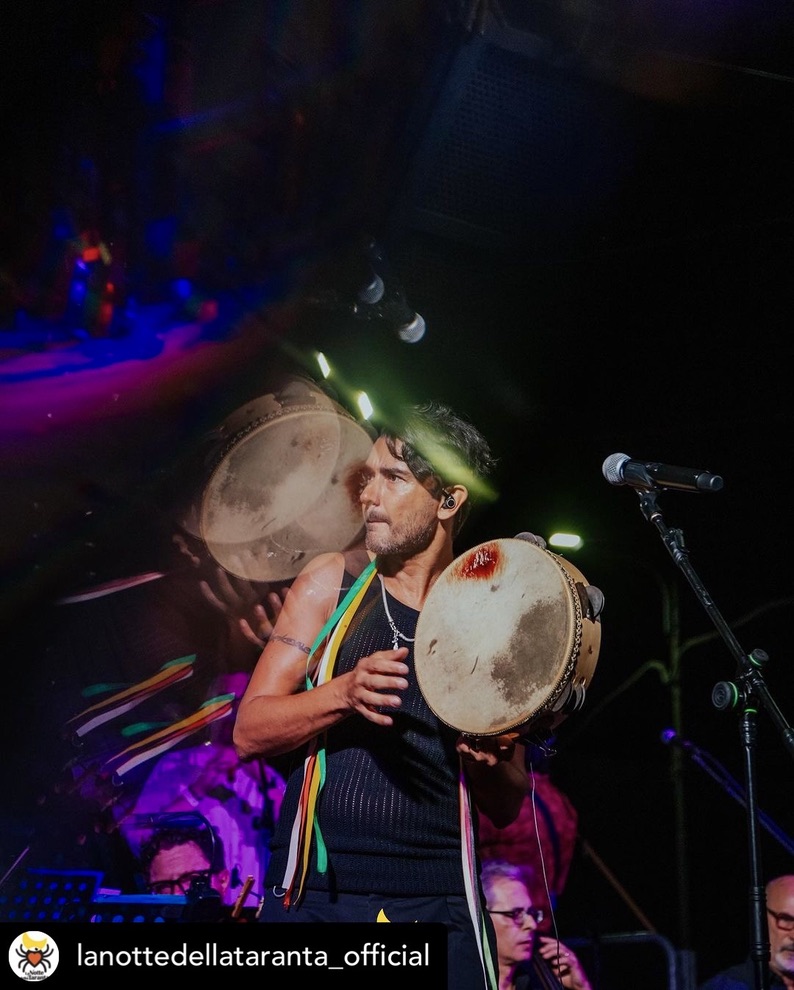
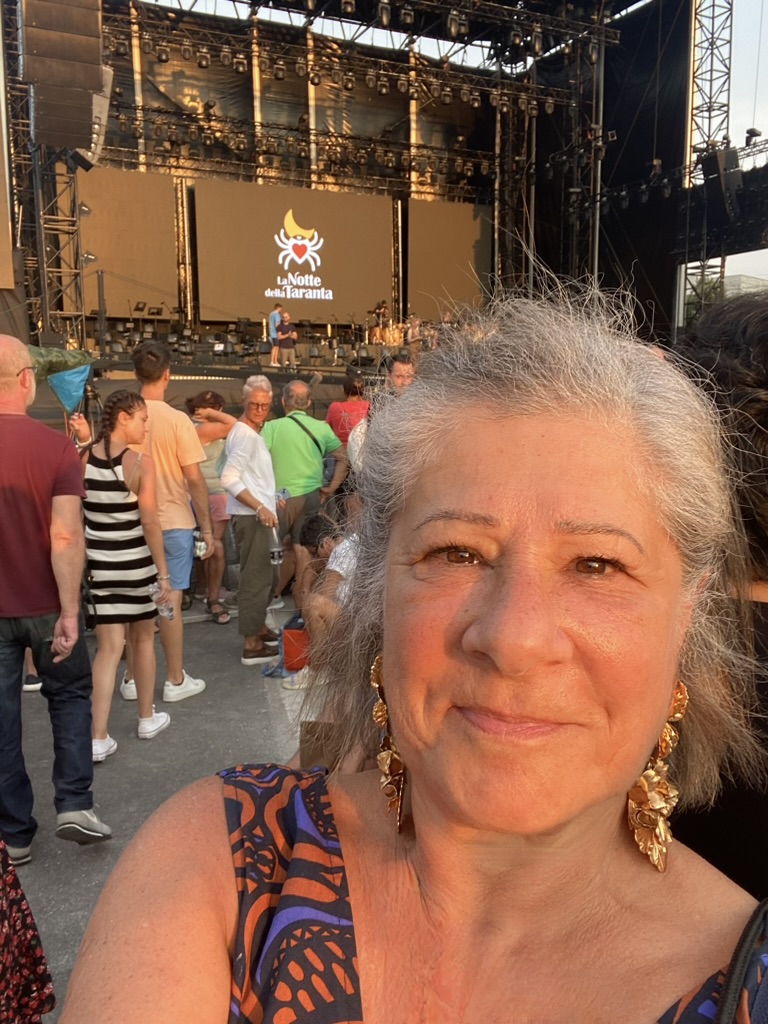
We left early from Polignano one morning this past summer… The plan was to stay just outside of Melpignano so as to avoid the crowds that would be descending onto this now internationally recognized Festival.
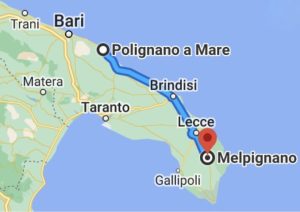 I had booked us one night in Zollino, a small town of barely 2,200 souls in the province of Lecce, and a mere 10 minutes from the festival grounds in Melpignano.
I had booked us one night in Zollino, a small town of barely 2,200 souls in the province of Lecce, and a mere 10 minutes from the festival grounds in Melpignano.
That morning, having left Polignano, we headed south. With two and a half hours to destination, I googled Zollino to find some information on this little town that lies smack in the centre of the boot between the Gulf of Taranto and the Adriatic. Definitely a central location, I thought, that would conveniently take one to Lecce, Gallipoli, Galatina and Otranto.
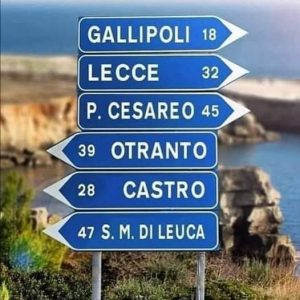
Zollino, I read, is one of nine towns that belong to the Grecìa Salentina, an area in the Salento in southern Italy, near the town of Lecce, which is still inhabited by some Griko people, an ethnic Greek minority in southern Italy who speak Griko, a variant of Greek. https://en.wikipedia.org/wiki/Grecìa_Salentina#cite_note-1
I was amazed at what I was reading; Zollino’s territory was settled in pre-historic times, as attested by the presence of dolmens and menhirs in the area. These are types of large stone tombs and upright “standing” stones placed in the ground by humans, —much like Stonehenge—typically dating from the European middle Bronze Age. Zollino, furthermore, in historical ancient times was an important trade centre between the Ionian and the Adriatic coasts. 1.https://it.wikipedia.org/wiki/Zollino
After skirting the coast and its stunning teal blue ocean we swung inland and were treated to an infinite stretch of olive groves. Everywhere stood, majestic and monumental, trees probably planted by the Romans and which remain today as cultural relics of antiquity.
We travelled silently, overwhelmed by the sight of such natural grandeur. Corridors lined with low walls of natural stones with irregular shapes which characterize much of the Salento landscape, led us through the olive groves and finally brought us into Zollino.
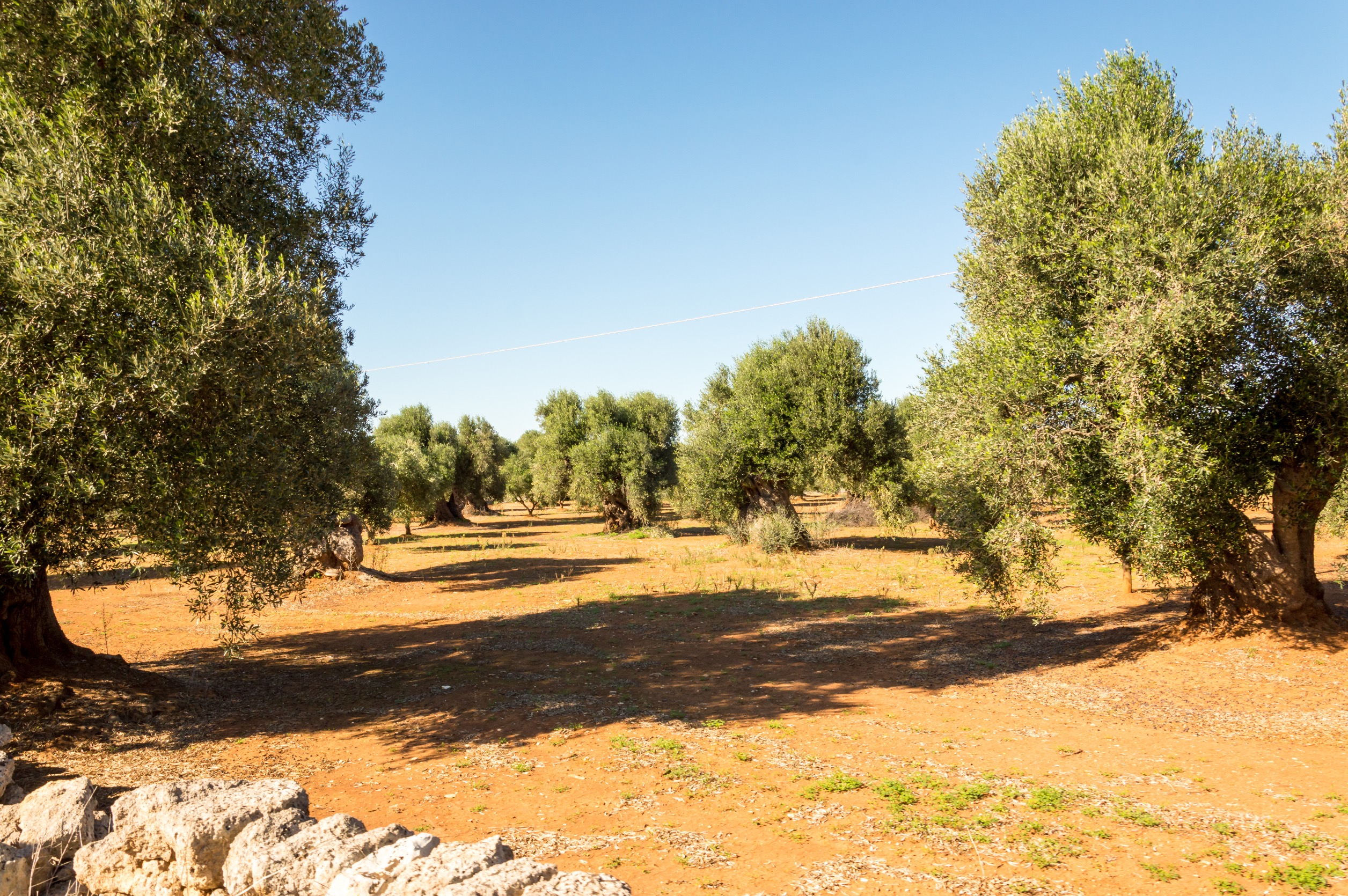
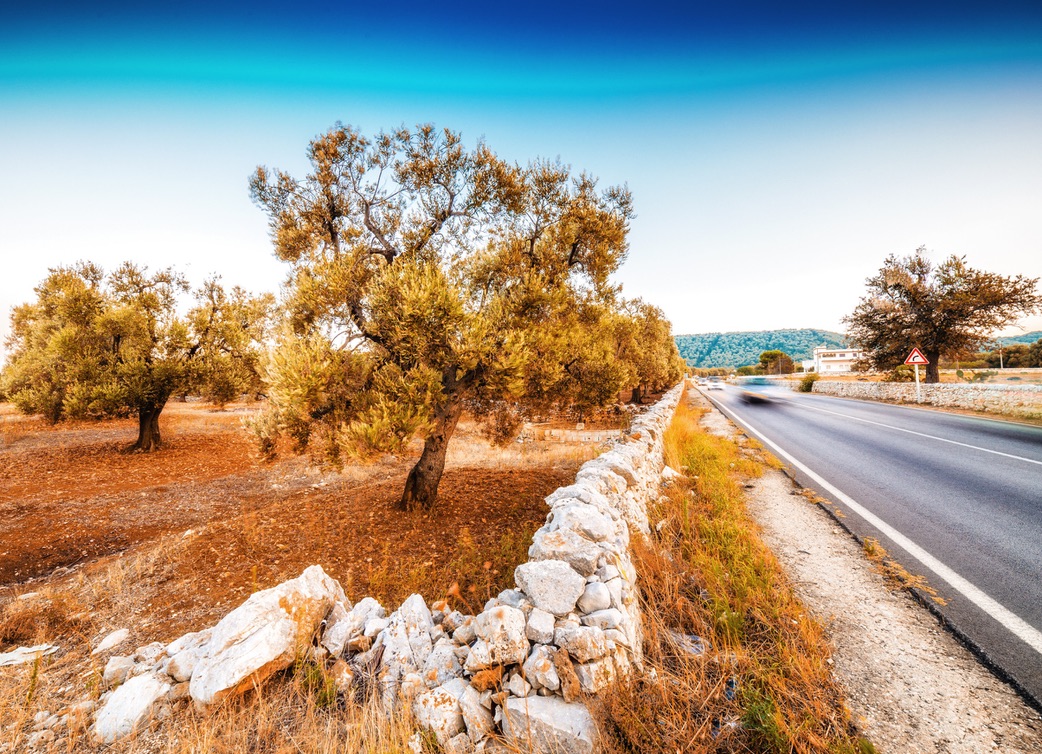
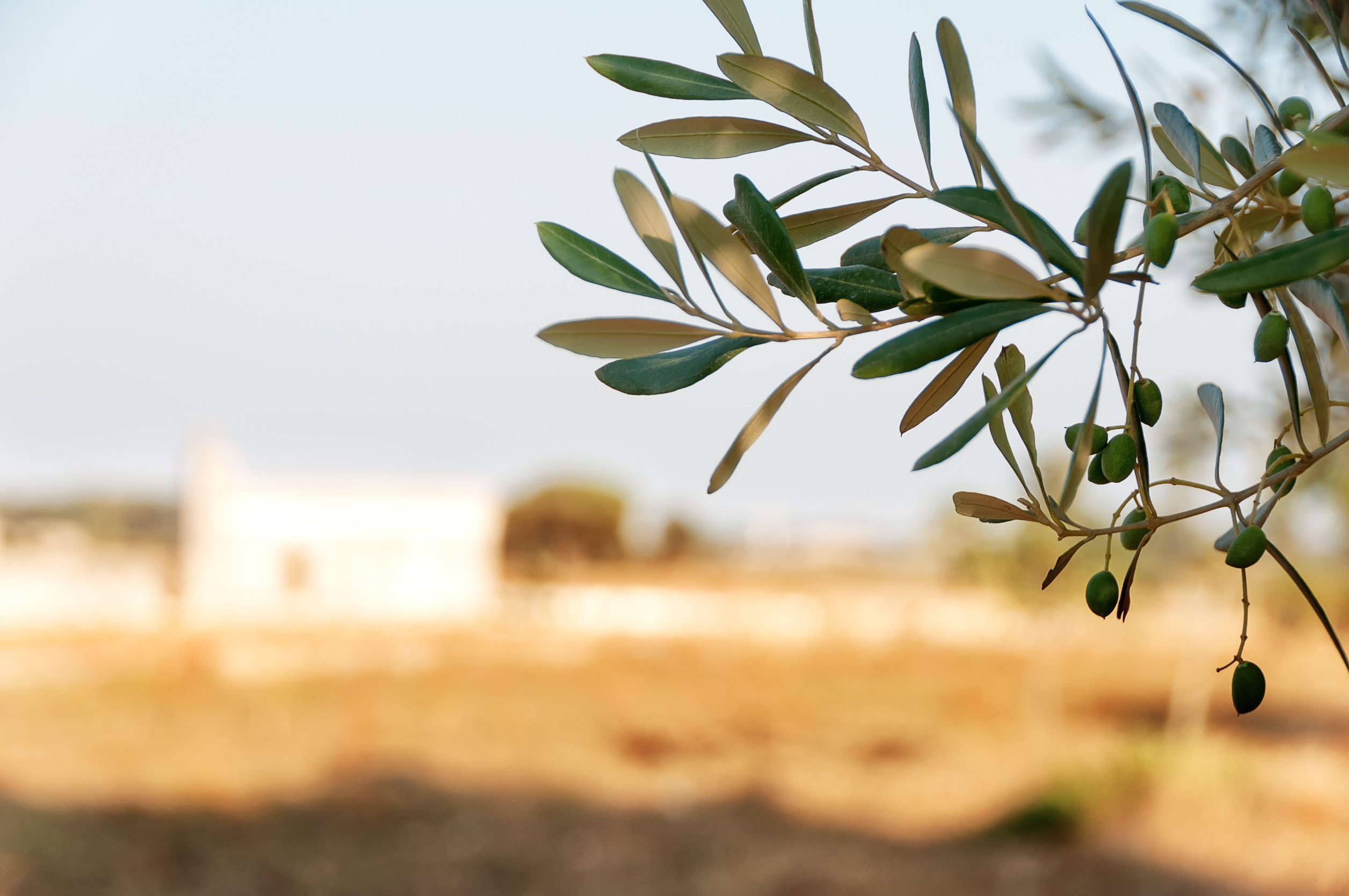
Never let it be said that one cannot get lost in a small town; but lost we were, circling around the main piazza, around and around, without finding our destination at Dimora La Fuga https://www.dimoralafuga.it/.
Zollino was a small town indeed. We saw most of it as we roamed in search of our address. Small and compact, the town however, exuded an air of self importance. The countryside we saw outside the village looked generous, rich and fertile. In fact, we learned that the typical product is the dwarf pea, to which the town has even dedicated a monument in Lecce stone.
Finally after a complete ramble around the town, it was the friendly, smiling voice of a young lady that answered my desperate call for directions. “I’ll be outside and wave you down” she said assuming that she knew where we were. Like an angel she appeared at the end of the street, waving to us as if we were long awaited relatives. How had we missed Number 2, Piazza Pertini?
A beautiful cream-coloured building standing elegantly on the corner of the Piazza had been overlooked. Surely this could not be the Dimora La Fuga I had booked? But there it was, standing proudly, proclaiming its noble ancestry. I felt I couldn’t wait to hear more about this lovely palazzo.
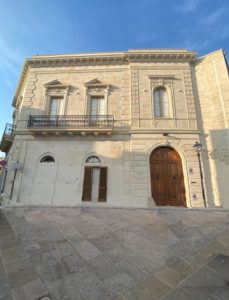
We were welcomed and helped with our luggage by the beautiful and friendly young woman, Laura, proprietor of Dimora La Fuga.
A large wooden doorway ushered us into the most delightful courtyard which began under a high vaulted ceiling bearing a wrought iron chandelier and composed of the large, cream coloured Lecce stones so typical of this area. This atrium opened up to an open enclosure, part breakfast nook and part lawn where a couple of shaggy trees, their branches sagging beneath a heavy load of fruit, —were they lemons or oranges?— provided blessed relief from the sun. An idyllic retreat, I thought, a place I craved to know more about.
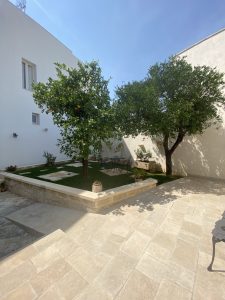
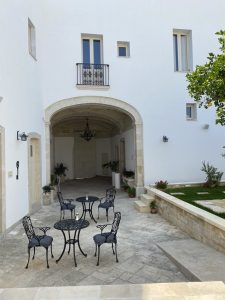 .
. 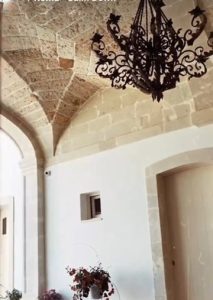
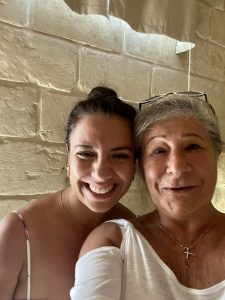
Right off the patio, Laura led us to a door that opened to a splendid, large room reminiscent of ancestral aristocratic palazzi of the south. But here, was a delightful surprise: juxtaposed within an old setting were the most modern design elements that only Italy is capable of creating. Under a massive vaulted ceiling two solid wood beams extended across the room, entwined with a heavy sailor’s rope from which dangled lightbulbs that illuminated the room. A large, very comfortable and sleek bed was the centrepiece of the room, while across from it a humble refurbished writing desk was all but what it seemed. Laura took pleasure in explaining to me its history. Upon lifting the top of the desk, she explained that it was known as the “Mattrabanca” in dialect, a type of receptacle where flour was stored for the making of pasta and bread. Her lilting, sing song voice rang out in dialect,
“sparagna la farina quandu la mantra è china, ca quad lu fundu pare, a ce te serve lu sparagnare?”
(Save the flour when the chest is full, because once you can see the bottom, what’s the point of saving anymore?)
Here, I could see, was the essence of Italian design: luxurious and minimalist, a mix of rustic, traditional and modern.
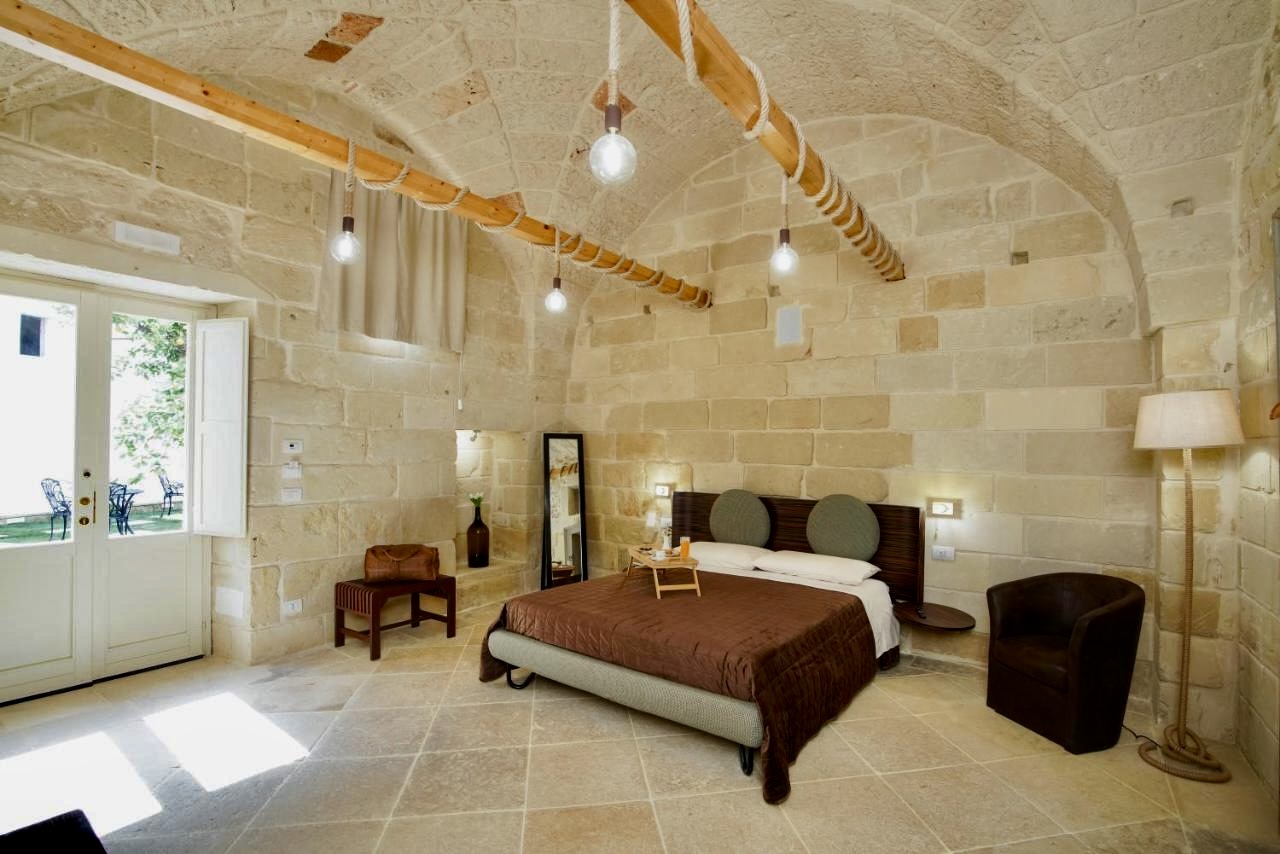
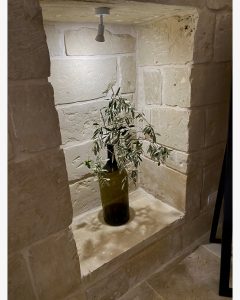
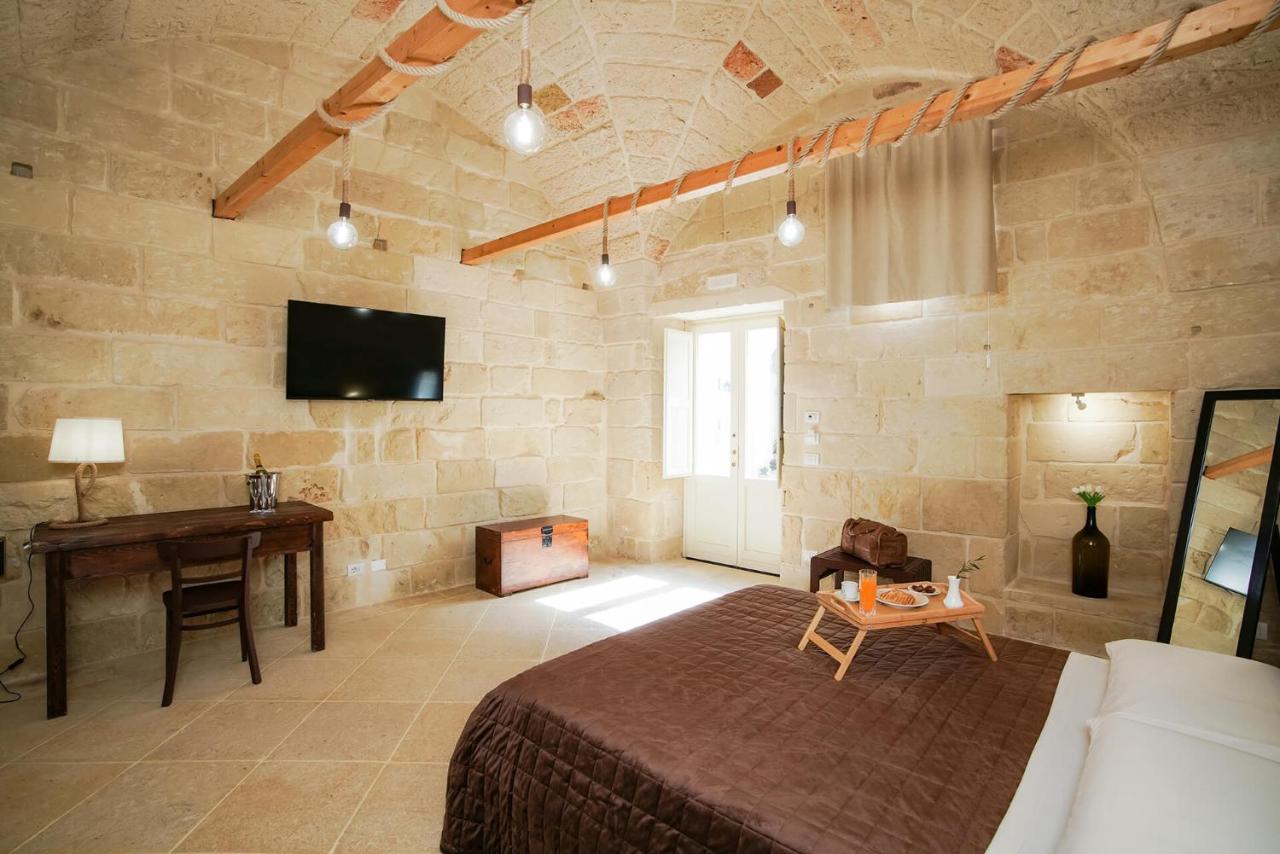
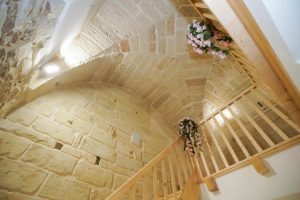
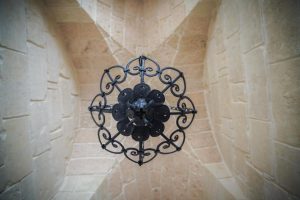
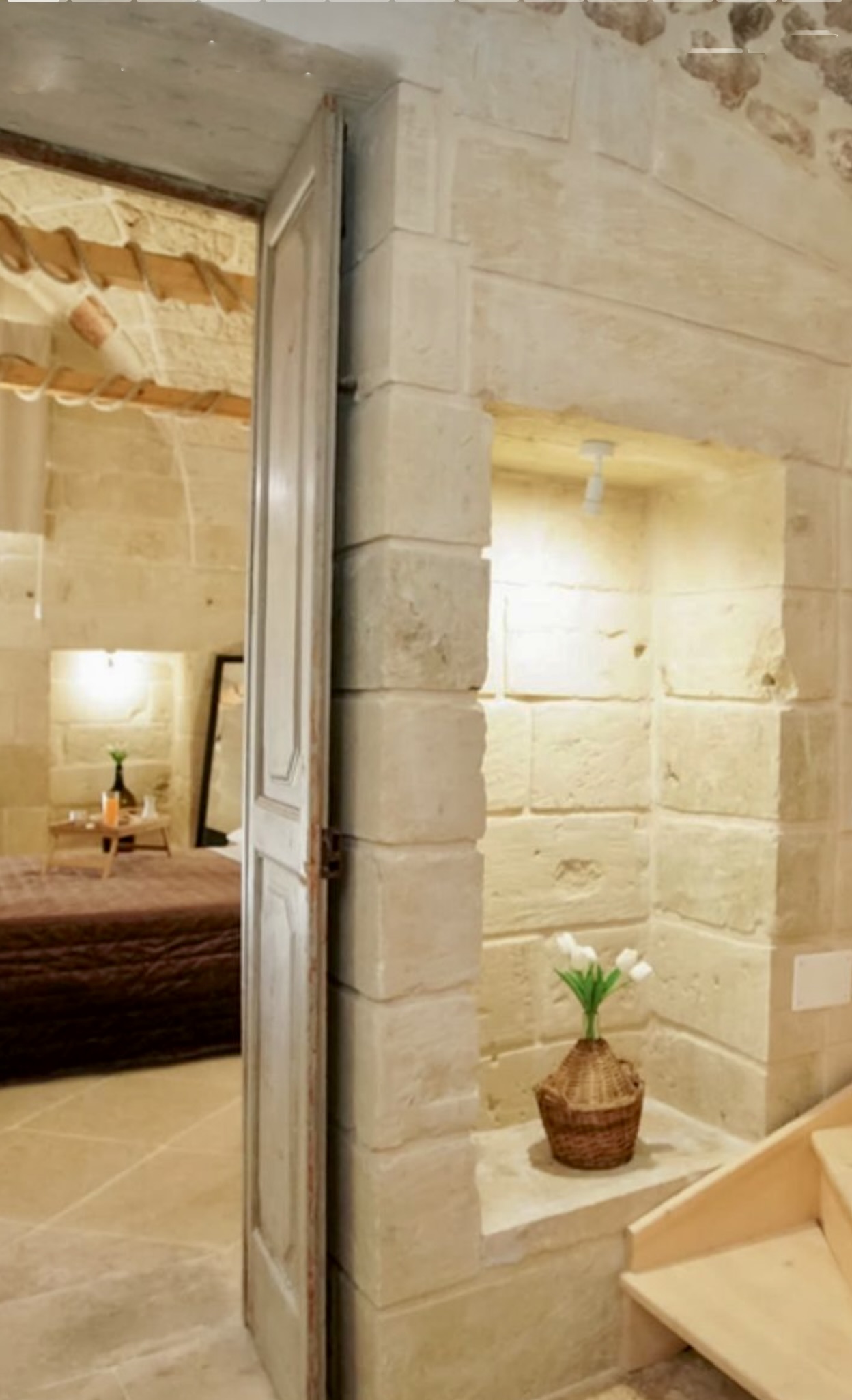
My eyes darted everywhere, not able to get enough of the very curated selection of furnishings and the fine attention to architectural detail in my surroundings. My curiosity and interest was all Laura needed to recount with pride the painstaking work of restoring the old palazzo back to life.
Laura and her husband Luigi, who runs Dimora La Fuga with her, acquired the historic building from her mother who in the 80s purchased it with the intention of using it as a warehouse to store and cure tobacco which would subsequently be sold. Tobacco, it seems, was an important economic resource for the Salento and for the Salento women, especially because it represented a form of emancipation as it allowed women to work and contribute financially to the well-being of the family.
Throughout the restorations of the building various cisterns were uncovered revealing that both water and food products were stored here, probably for families that resided on the upper floors. The main, or ground floor, where our room was now situated, was space used for servants and animals. Both in the rooms and in the atrium, that is, in the main entrance hall, there are many elements that speak of the presence of animals in these places, such as, for example, some hooks that were used to tie the horses, or even the floor itself which appears clearly worn by the continuous passage of animals and people.
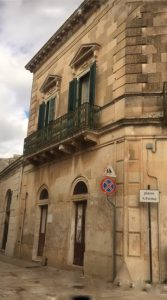
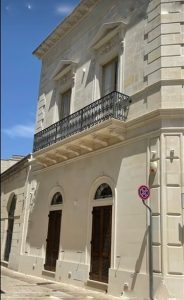
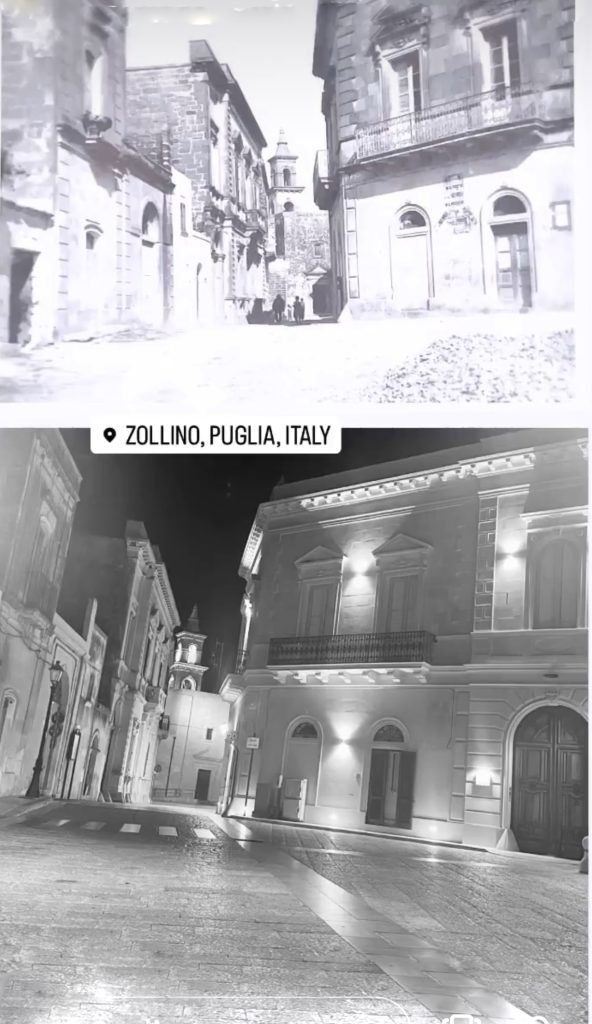
As Laura recounts for our benefit the process of recovery of this grand palazzo which is now Dimora La Fuga, it is clear that it has been a pure labour of love.
She tells us that for her and her husband, their main objective was to preserve the history of the palazzo and therefore to leave as much as possible in its original state so that it might tell its story. The cisterns were preserved and made safe. The flooring retains the depressions and discolourations of time and use.
The ceiling vaults at the entrance were brought back into view, and the grout lines (fuga/fughe) were lovingly restored, allowing that each stone brick be well defined. This made it possible to see and therefore admire all the natural colours of the stone.
Luigi brings out from the inner office a selection of books that show us the “before and after” of the restoration. We are now sitting in the patio, sipping a drink under the, by now, falling Salentino sun.
Soon we will be heading out to Melpignano and the Taranta festival we came to see. Our hosts generously offer to give us a ride to the neighbouring town, but first, some local bits and bites to go with our drinks.
As much as I want to attend the festival, I am reluctant to leave this oasis. Peace and tranquility reign here, in this haven of time past and time present.
What a perfect retreat Laura and Luigi have created here. It is beautiful and comfortable and very affordable. What luck to have found it.
The next morning, having enjoyed a lovely breakfast in the courtyard, we rise to unwillingly take our leave. As I tuck in my chair, Laura exclaims that I mustn’t do that; in these parts she tells us, “we leave the chair where it is”. By not tucking it in, we intend to return, to resume our place at the table. Indeed.
And, the next time I come, which will be soon, it will not be on our way to somewhere else, but the destination itself.
Thank you Laura and Luigi, for a splendid stay!
Dimora la Fuga
Piazza Pertini, 2 – 73010 – Zollino
350.0484011
